Why Straining Homemade Yogurt Doubles the Protein Content
Sneak Preview: Read why straining homemade yogurt doubles the protein content of your yogurt. Learn more about yogurt whey and how the straining process affects the amount of protein in your yogurt.
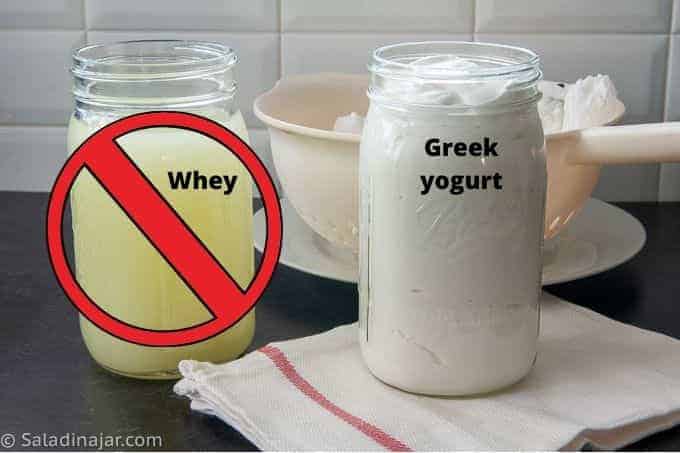
As an Amazon Associate, I earn from qualifying purchases.
Are you looking to eat more protein? If you like to make yogurt, you can double the protein content by straining it (aka Greek yogurt). Find out why this process pumps up the protein numbers and makes your yogurt more satisfying.
To be clear, we are talking about dairy yogurt and specifically, homemade yogurt. You can use full-fat milk, low-fat milk, or fat-free milk.
If you prefer to add protein to your yogurt, skip to the last section for some ideas you may not have considered.
Happy Cooks Speak Up
“Very informative! Exactly what I was looking for – I had the same question about the whey as your other reader did.” 🙂 — ANJANA
A while back, I received the following question from a reader:
“If Greek yogurt is plain yogurt with the whey removed and whey is 100% protein, then why is Greek yogurt higher in protein than plain yogurt?”
Answering this question sent me down an eye-opening path. I’m excited to share my findings with you, my favorite yogurt makers and yogurt lovers.
The commenter appears confused about the different types of whey. Not uncommon! Whey is the secret to increasing the protein, but not in the way this reader is thinking.
The pros and cons of eating lots of protein are not the subjects of this post. However, you can read more about the benefits or reasons to eat more protein here.
Let’s jump in!
FAQs About Yogurt Whey
1. What’s the difference between cheese whey, yogurt whey, and dried whey protein powders?
a. Dried whey protein powder is a processed product made from highly concentrated sweet whey. It comes in several forms. You can read more about the different types of dried whey here. Many people add it to smoothies and other beverages as a high-protein ingredient.
b. Sweet whey is a by-product of making cheese, not yogurt. It contains considerably more protein than yogurt whey.
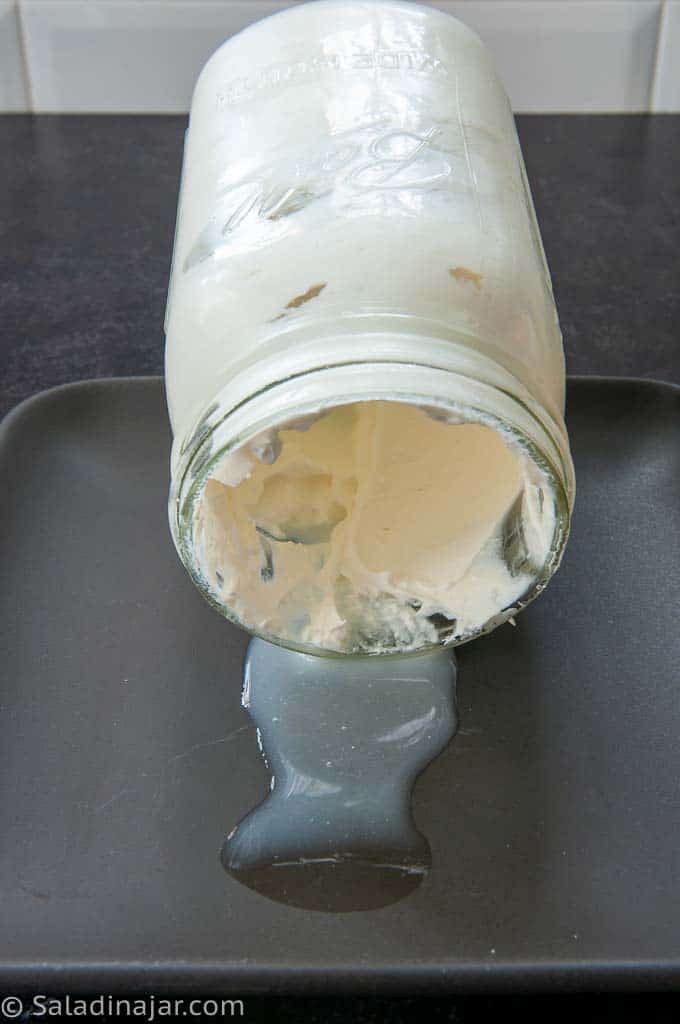
c. Yogurt whey lands in the category of acid whey. When you open a jar of yogurt that has been sitting for a while, the clear liquid you see on top is “acid” whey.
When you drain the liquid off regular yogurt to make Greek yogurt, whey is the liquid you will see in the bowl.
The simplest definition of Greek yogurt is regular yogurt with much of the whey removed.
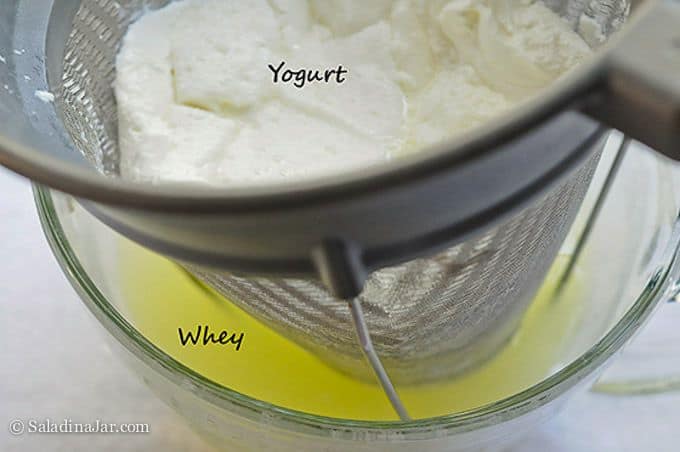
Contrary to the commenter’s assertion, yogurt whey is not 100% protein. In fact, according to The Calorie Counter, yogurt whey (liquid acid whey strained from yogurt) contains 1.9 g of protein per 1 cup serving.
Not convinced?
Try to make ricotta cheese from yogurt whey instead of cheese whey. There is not nearly enough protein left in yogurt whey to make much ricotta cheese.
One must add LOTS of milk (extra protein) to whey to make cheese.
That is why ricotta cheese is commercially made from sweet whey and not from yogurt whey.
2. What are the nutritional numbers of yogurt and whey related to protein content?
(I’m no mathematician. Many thanks to “Alexa” for helping me with the math.)
Start with 8.5 grams of protein per 1 cup of regular full-fat yogurt per The Calorie Counter. Strain it.
For the sake of simple numbers, let’s say you reduce the solids by half (50%) when straining the yogurt.
This would result in a half-cup of whey and a half-cup of Greek yogurt. When it comes to yogurt whey nutrition, 1 cup of whey contains 1.9 grams of protein, according to The Calorie Counter. Accordingly, a half-cup of whey would contain .95 grams of protein.
That leaves 7.5 grams of protein in a half-cup (4 oz) of strained yogurt.
Double 7.5 grams for one cup of strained (Greek) yogurt. By my calculation, you get 15 grams of protein in 1 cup of Greek yogurt.
The winner is…
Compare 8.5 grams of protein in one cup of regular yogurt to 15 grams in 1 cup of Greek yogurt. See what I mean?
3. Does Greek yogurt or regular yogurt contain more protein?
Greek yogurt contains more protein than regular yogurt.
With concentrated yogurt (Greek yogurt), the protein content increases. Only a small part of the protein leaves when the whey separates from the original yogurt.
Think about it this way.
Place a fresh, sweet grape in the sun. You will lose some water but little sugar in transforming into a raisin.
Result? Raisins are sweeter than grapes. Why? Because the relatively same amount of sugar occupies a smaller mass.
Likewise, straining yogurt causes it to lose lots of whey but little protein. So most of the protein is now compressed into a smaller amount of yogurt that we call Greek yogurt.
4. Are the numbers different if you make your own yogurt?
If you make homemade Greek yogurt as I do, the numbers will vary from batch to batch. This is because a variable amount of whey is strained off with each batch. The more you strain, the higher the protein.
5. What are the benefits of straining yogurt?
Less sugar. Less lactose. Creamier texture. More filling and satisfying. And of course, more protein.
“Strained Greek yogurt is lower in sugar than regular yogurt. Removing the whey produces a thicker, creamier yogurt with a tart taste.”
Is Greek yogurt good for you?
Please notice I did not say “fewer calories.” The calorie count depends on the fat content of the original milk used to make the yogurt.
Greek yogurt made from fat-free milk will be lower in calories than regular yogurt made from fat-free milk. This is because a majority of the sugar leaves with the whey. (This assumes you have not added any form of sugar or other add-ins.)
Straining Greek yogurt made from whole milk will concentrate the fat as whey contains negligible fat. However, it is creamier, more satisfying, and debatably less sour.
6. What is the best way to strain yogurt?
The most common way is to use cheesecloth. I detest using cheesecloth because it’s messy, so I’ve devised other ways to strain my yogurt. Have a look and choose your favorite: An Easy Way To Strain Yogurt Without Cheesecloth, A Yogurt Bag as a Cheesecloth Alternative for Making Greek Yogurt, How To Strain Yogurt with Paper Coffee Filters.
7. Now that I’ve strained my yogurt, is it OK to drink the whey?
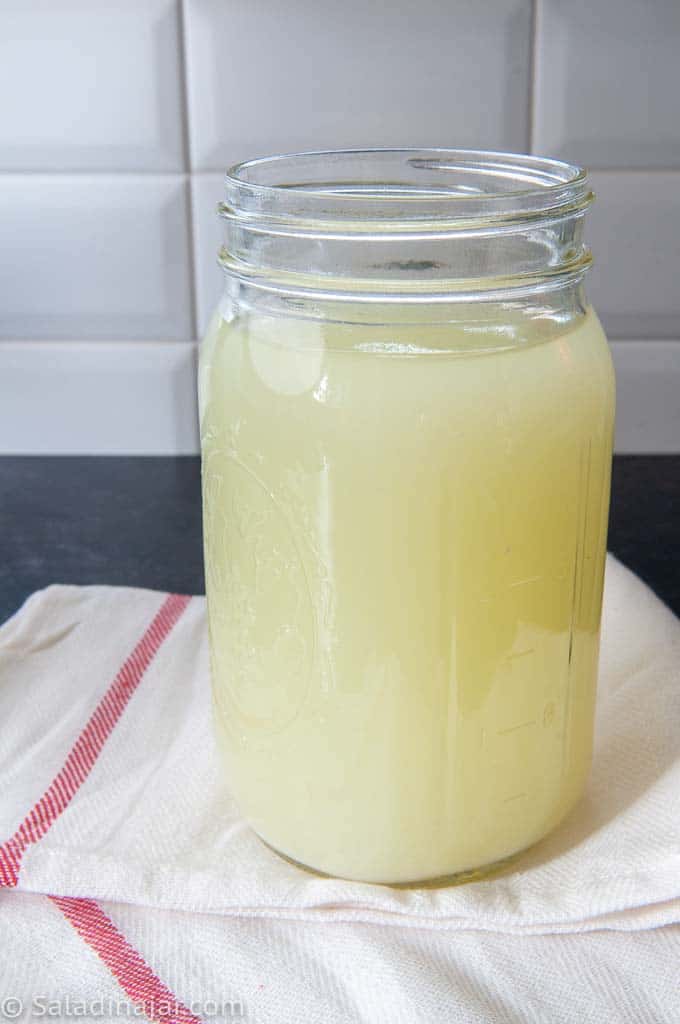
Yogurt whey is safe to drink. However, since it is “acid whey,” the taste is sour. It is an acquired taste I have yet to acquire. Read about many other ideas for what to do with whey.
8. Straining seems like more trouble than I’m up for. Any other ideas?
REMINDER: These ideas will also add calories. Proceed with knowledge.
- Add powdered milk to the milk before you incubate your yogurt. It will also help to make your yogurt thicker. I think it changes the flavor and makes the texture a bit chalky, so I’m not a fan. Each to his own. You might like it.
- Add protein powder or whey protein. Again, this can change the flavor and texture.
- Add peanut butter powder, nuts, flax seeds, or chia seeds. Check out the Chocolate Peanut Butter Yogurt recipe on this blog.
- Make yogurt with milk that has been processed to reduce the water. This results in concentrating the milk and increasing the nutrient count. I often use Braum’s milk (a regional brand). They boast of 50% more protein in a cup of their fat-free milk.
- Use ultra-filtered milk such as the Fairway brand to make your yogurt with the cold start method. It starts out with 13 g of protein per cup. If you strain it to make Greek yogurt, you can multiply the amount of protein depending on how much whey you drain off.
Parting Thoughts: Whether you make it yourself or buy it from the store, Greek yogurt is a delicious way to increase your protein intake.
If you have questions or suggestions, email me privately for a quick answer: Paula at saladinajar.com. Hope to see you again soon!
Disclaimer: As part of my Home Economics degree, I’ve completed formal training in nutrition, but I am not a registered dietitian.

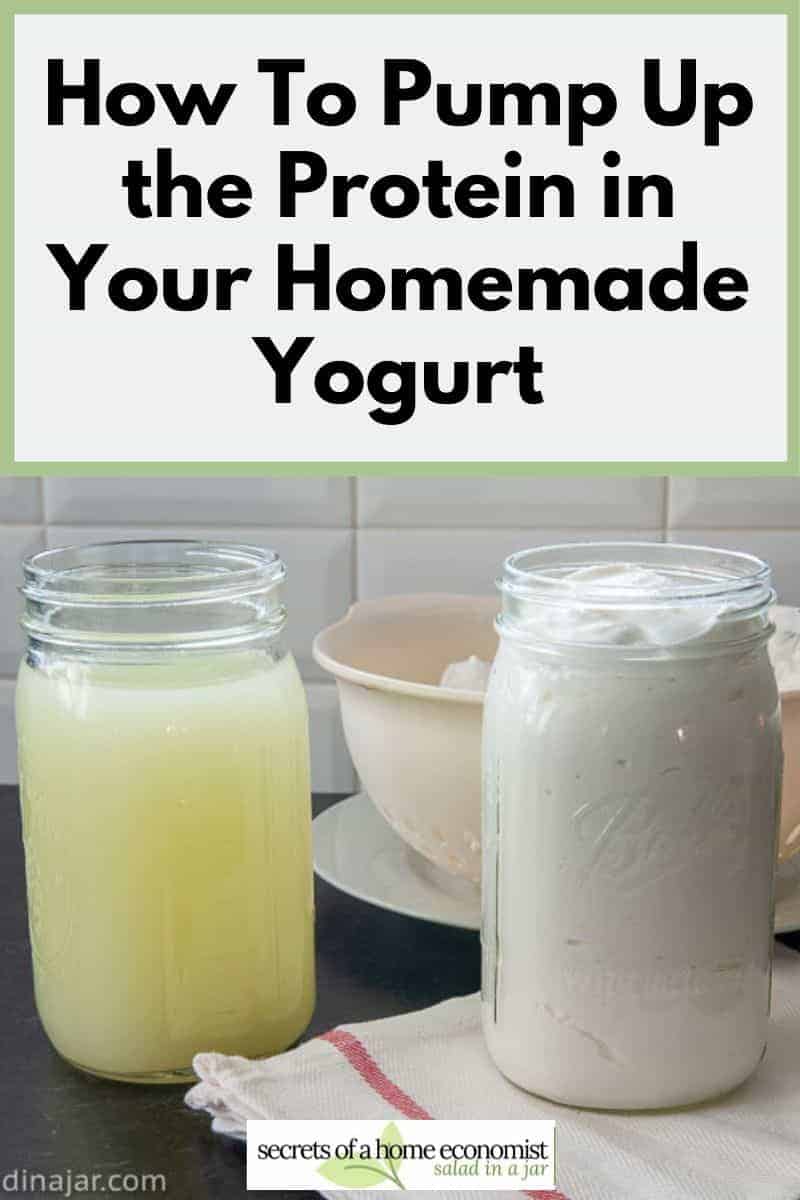



Paula Rhodes, owner
As a retired home economist, I created Saladinajar.com to share my belief that you don’t have to be a chef to find joy in creating homemade food worth sharing. Bread machines (used in an unconventional way), homemade yogurt, and quick microwave recipes are my specialty.